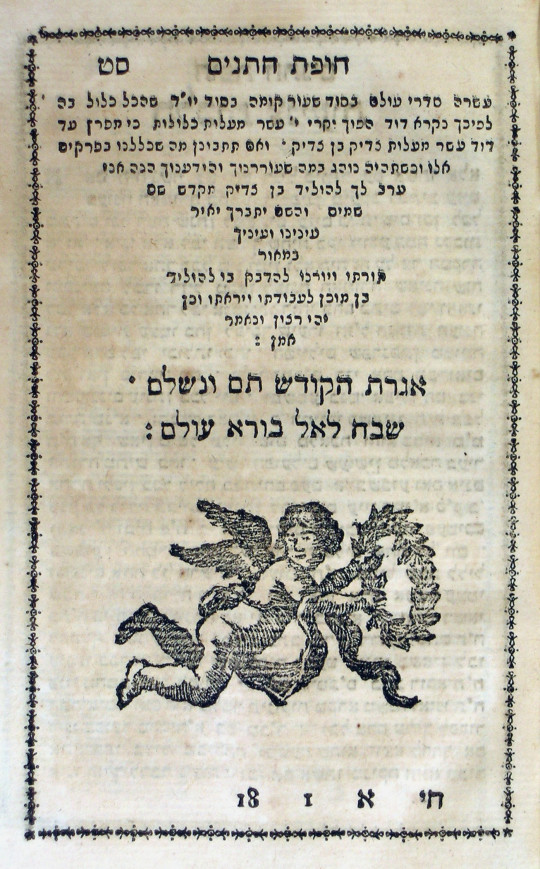Is Valentine’s Day good, or bad, for the Jews? Of course, I’m not really asking this question today, but it was – together with celebrating Halloween – a serious matter about which I was very critical as a newly Orthodox teenager trying to carve out a Jewish identity of my own. My view, today, perhaps aside from the over-commercialized aspects of flowers and chocolate, is quite different. Yes, I know that there are both Christian (St. Valentine) and pagan (Cupid) connections, but if it brings people together, if it gives two people in love an opportunity to express that love, it’s probably a good thing.
A few years ago, Rabbi Everett Gendler published a piece entitled “Don’t dismiss the Jewish character of Cupid” which includes lots of material about this little fellow’s place among Jews in the Greco-Roman Period. Along with many others, Gendler points out the similarity between Cupid and the cherubim that sat above the Holy Ark of the Covenant, as described in this week’s Torah reading:
Make one cherub at one end and the other cherub at the other end; of one piece with the cover shall you make the cherubim at its two ends. The cherubim shall have their wings spread out above, shielding the cover with their wings. They shall confront each other, the faces of the cherubim being turned toward the cover. Place the cover on top of the Ark, after depositing inside the Ark the Pact that I will give you. There I will meet with you, and I will impart to you — from above the cover, from between the two cherubim that are on top of the Ark of the Pact — all that I will command you concerning the Israelite people. (Ex. 25:19-22)
There are many depictions of what this might have looked like. One example is this one found on a late 19th century Mizrah from Prague:
Remaining true to the literal meaning of the biblical text, the cherubim here are basically all face and wings. But we do find many cherubic figures that look a lot like the Cupid most of us know, for example, this frontispiece, from a book of Rabbi Eleazar Kaliri‘s liturgical poetry published in Roedelheim, Germany in 1832:

Sefer Krovot – Liturgical Poetry, Rabbi Eleazar Hakalir, Roedelheim, Germany, 1832, Gross Family Collection, Tel Aviv
As seen clearly on the right, a supposed image of the famous poet Rabbi Eleazar (7th century) above an altar of sorts, below two cherubim holding a shield with the name of the book, Sefer Hakrovot, resting upon the clouds. This image, sans Rabbi Eleazar’s face, appears in at least one other book found in the Gross Family Collection, a prayer book entitled Safah Berurah, also published in Roedehelm. Though the fact that it was printed 12 years later might indicate that usage of the cherubim image is secondary. My guess is that the printer used this image to reflect a clever word-play: k’ruvim (cherubim) – k’rovot (liturgical poems). Another, or additional, possibility is that the words of those prayers emanate from between the cherubim much in the same way that Moses was told that God’s words would be heard from that same spot.
The Gross Family Collection features hundreds of objects and documents that come from the world of Jewish magic and include many incantations and drawings concerning the relatives of the cherubim and Cupid, a vast array of angels. In the example below, an amulet written sometime in the 1990s in Israel, according to directions given in the Kabalistic work Raziel Hamalach, is meant to influence the appropriate angels responsible for a loving relationship between wife and husband:
Some rely on the magical aspects of the Jewish tradition, others on the magical powers of chocolate and flowers. But for many of us, a solid loving relationship is based on direct and intimate communication, like the cherubim facing each other. And from that place, God chooses to speak – the space between two people in love.
Shabbat Shalom v’Hodesh Tov!






I love this piece. It is interesting and thought provoking.